The Port of Coos Bay has given a 75 year lease to NorthPoint Development, a privately held Kansas City real estate development company to build a container shipping terminal on the North Spit of Coos Bay.
NorthPoint has no record of involvement in building or managing shipping terminals and has provided no information to the community about their plans. Additional land will be needed for the terminal to be fully operational.
The DB Western chemical engineering and fabrication company has an in perpetuity lease for 32 acres immediately north of the proposed terminal. South of the terminal are some shoreline and intertidal lands owned by the Port of Coos Bay including a previous port development project, the T-dock, which has never had any economic use.
Dredging for the terminal will undermine the T-dock structure and it will have to be demolished. The Federal Bureau of Land Management has ownership of the rest of the southern spit. The intertidal and subtidal areas adjacent to the terminal site would have to be dredged and filled to accommodate the Neo Panamax or Post Panamax3 1100 foot long ships, which carry 13,000 containers. The Port of Coos Bay has conducted ship simulation studies to determine if the proposed navigation channel will accommodate these ship with their 48 – 50 foot drafts. The results indicate that ships will need to enter and leave Coos Bay around the high tide so that they will have sufficient under keel clearance to do this safely.
Any information about which shipping companies might us the Coos Bay terminal, or who would operate the terminal, or what will be imported or exported is not available, and is probably not known otherwise the community would have heard about it!

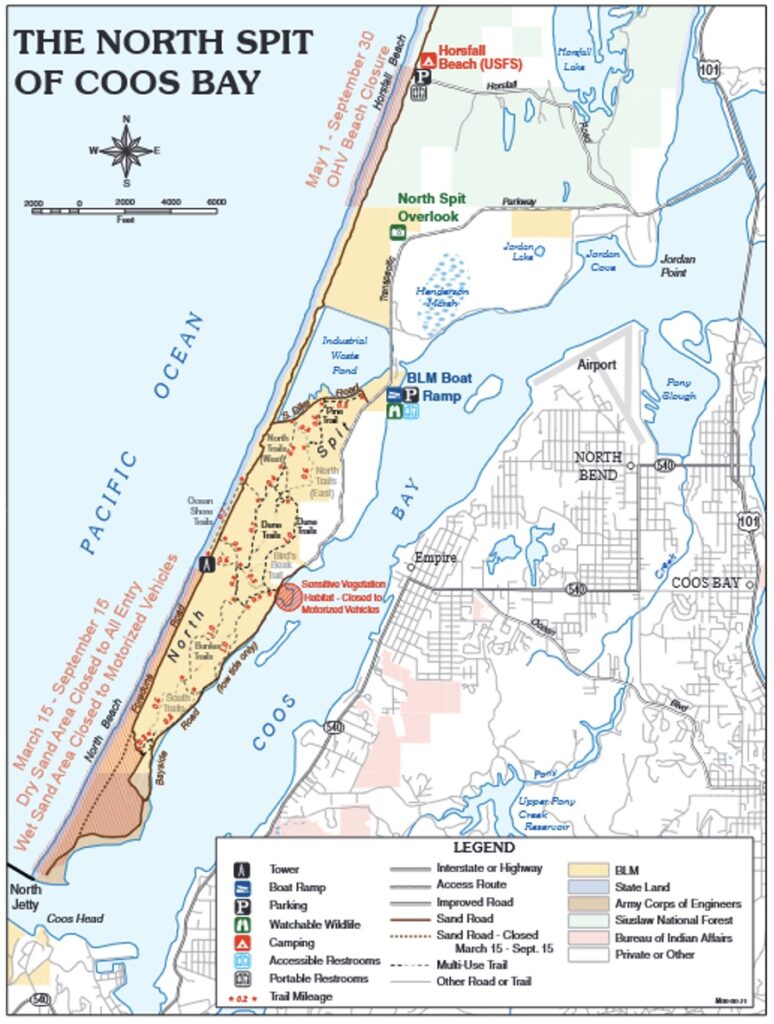
Terminal Design & Operation

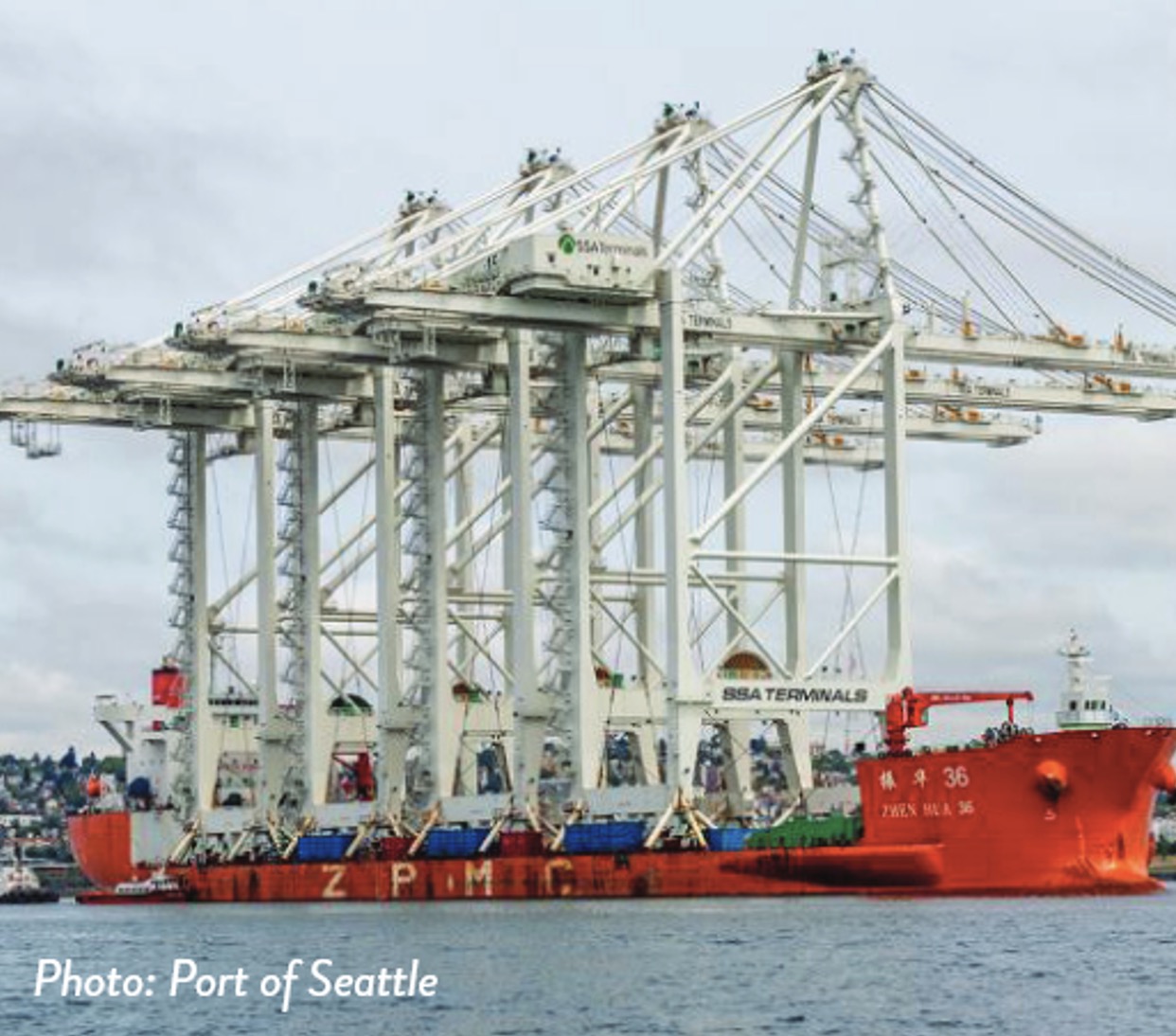
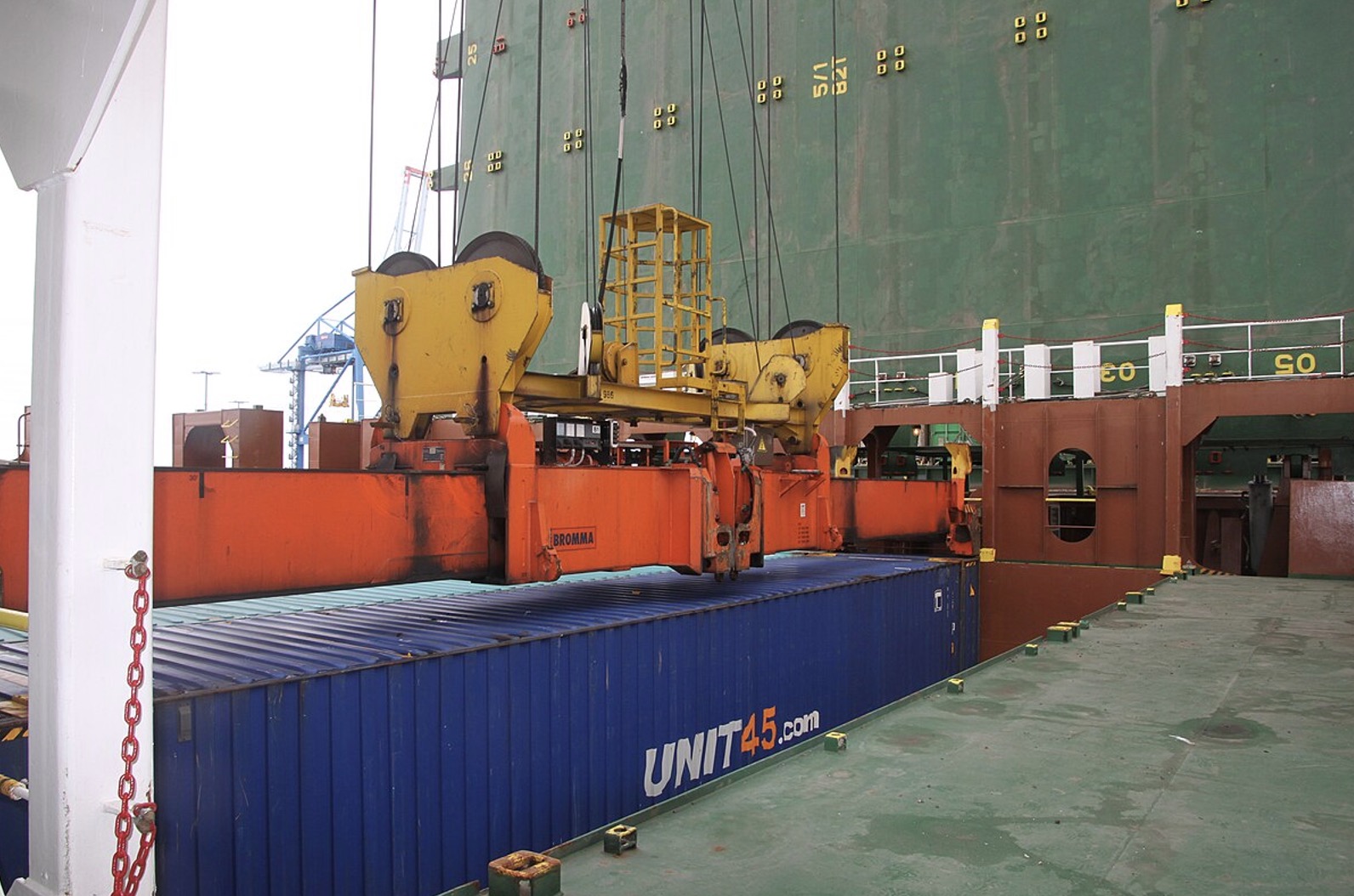

Schematic design plans for the terminal have vacillated between providing berths for two or three ships, each carrying 13,000 twenty foot equivalent (TEU) containers. The most recent schematic drawing shows two berths served by the proposed 45 foot deep navigation channel with a frontage area dredged to a 50 foot bathtub berth so that a ship does not touch the bottom of the bay at low tide.
Three 13,000 TEU ships each week are anticipated, which explains the port’s assertion that 2 million TEUs would be handled each year (13,000 x 52 = 2,028,000).
A 13,000 TEU ship coming from Asia, however, typically visits three or four ports unloading and loading containers before heading back to Asia. It does not unload or load all its containers at one port so it is not possible to know how many containers would actually be handled at the Coos Bay terminal from a three ship a week visit.
Ten ship-to-shore gantry cranes would be used to unload and load some of the containers into the container yard.
While in use the cranes are over 250ft tall and when extended to allow ships to dock safely they reach over 4oo feet into the air.
After sorting on the dock, the containers would be loaded onto rail cars.
Ships will arrive at any time of the day or night so the terminal will be well lit.
Learn about the logistics of unloading containers via this video from Maersk.
Wind and Cranes
The North Spit is notoriously windy. Strong winds can destabilize a container being lifted off a ship and the crane operator may be unable to control it. High winds produce a “sail effect” on containers and cranes. Containers experience skew meaning they can swing on the cables that lower them to the dock. At high winds speeds cranes must be locked down to prevent them overcoming their brakes and rolling along their tracks, or even toppling over. Wind gusts are particularly problematic. This is why most ports are located in more sheltered areas of harbors. Crane operations need to be suspended when wind gusts exceed 30mph, while the crane itself needs to be taken down if gusts are predicted to be above 40mph.
Real time data on wind speeds at the North Bend airport, the closest site to the proposed terminal.
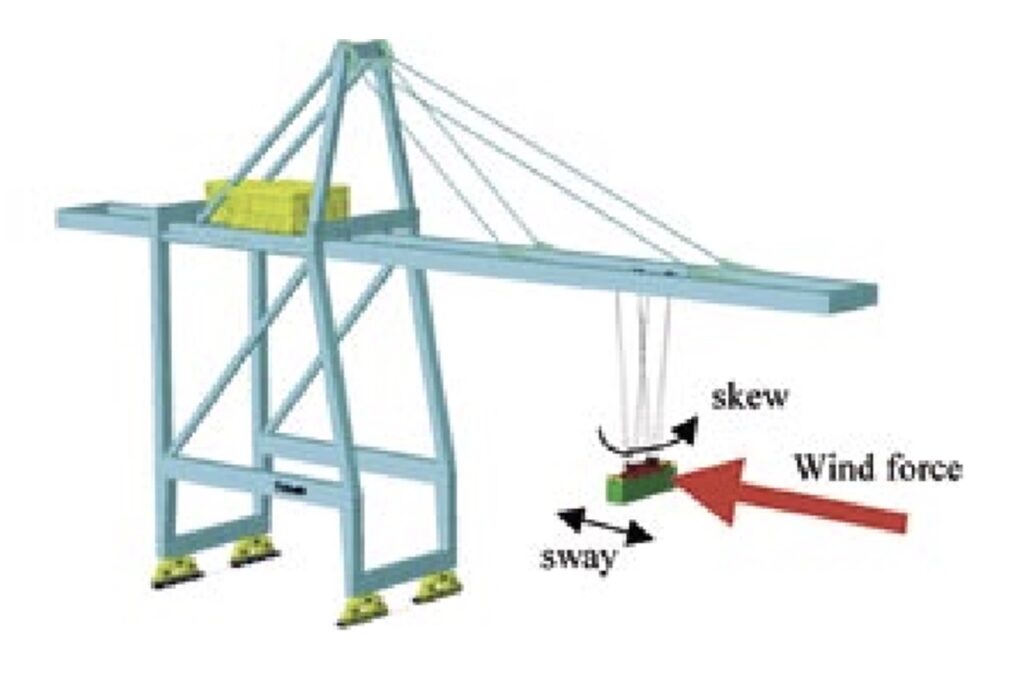
The Container Shipping Industry
Recent events in the container shipping industry easily demonstrate its volatility, driven by a complex interplay of factors over which the Port of Coos Bay or the NorthPoint company has no control. Pandemic backlogs, the introduction of tariffs, changes in where goods are manufactured, labor relations, and terrorism in the Middle East are all examples of how quickly the industry can be impacted. Container ships are owned by large shipping companies, based primarily in Asia and Europe, some of which are publicly traded, others are privately held.
These companies plan vessel routes and schedules based on factors like trade volumes, market demand, and port efficiency. The companies also form strategic partnerships that allow them to share resources like shipping routes, vessels, and terminals.
There is a trend towards shipping companies operating their own port terminals. For example, the shipping company Maersk operates Pier 400 at the Port of Los Angeles.
Container Ships

The size of container ships, and thus the number of containers they can carry, continues to increase.
The Coos Bay terminal is being designed for the Very Large Container Ships (VLCS) and the New Panamax Ships, (also known as Neo Panamax or Post Panamax3) which can carry 13,000 containers.
Most ships in this size class have a 48 – 50 foot draft (under water depth). The Port of Coos Bay is planning on a 45 foot depth expansion of the Federal Navigation Channel meaning that, with the need for a 10% under keel clearance, these ships will only be able to transit Coos Bay at the highest tides.
Larger, more efficient new ships are being built that can carry many more than 13,000 containers and are too big for Coos Bay, making the terminal obsolete before it is built.
The Turning Basin at River Mile 8.2
The Port of Coos Bay’s plans for the navigation channel modification go past the proposed terminal site for an additional three miles where a second turning basin is proposed. The reason for this is not clear. The economic study submitted to the USACE for navigation modifications says that it is to allow capesize bulkers to come into Coos Bay. These ships are called capesize as they are too large to transit the Panama or Suez canals. They are dry bulk carriers, typically transporting iron ore or coal. These ships are over 1,00ft long and have drafts of 55 – 60 feet, and when loaded with cargo would never be able to leave Coos Bay in the 45-foot Coos Bay navigation channel.
West Coast Container Ports
There are ten container ports on the west coast of North America.
- Canada has two: Prince Rupert and Vancouver
- Washington has two: Seattle and Tacoma – jointly known as the Northwest Seaport Alliance
- Oregon has one: Portland
- California has three: Oakland, Long Beach, and Los Angeles
- Mexico has two major: Manzanillo and Lazaro Cardenas
All of these ports, including Portland, have expanded and upgraded their facilities since the PCIP project was first discussed. The Biden administration’s infrastructure funding allowed all of the Washington and California ports to improve and expand their facilities. All of them have on-dock rail access at many of their terminals.
The State of the US Container Shipping Industry
Each year the US Department of Transportation’s Bureau of Transportation Statistics provides data about the US container shipping industry. The 2025 report shows that there is no need for increased container shipping capacity on the west coast. Total containerized exports from all U.S. ports have only increased by 4.4% from 2014 to 2023. However exports have decreased by 18.6% from West Coast ports compared to an increase of 20.3% from East Coast ports, and 21.9% from Gulf Coast ports. In contrast, US containerized imports grew 24.3% from 2014 to 2023. This growth was dominated by East Coast and Gulf Coast ports which increased containerized imports by 41.8% and 43.8% respectively. West Coast ports’ containerized imports remained flat.
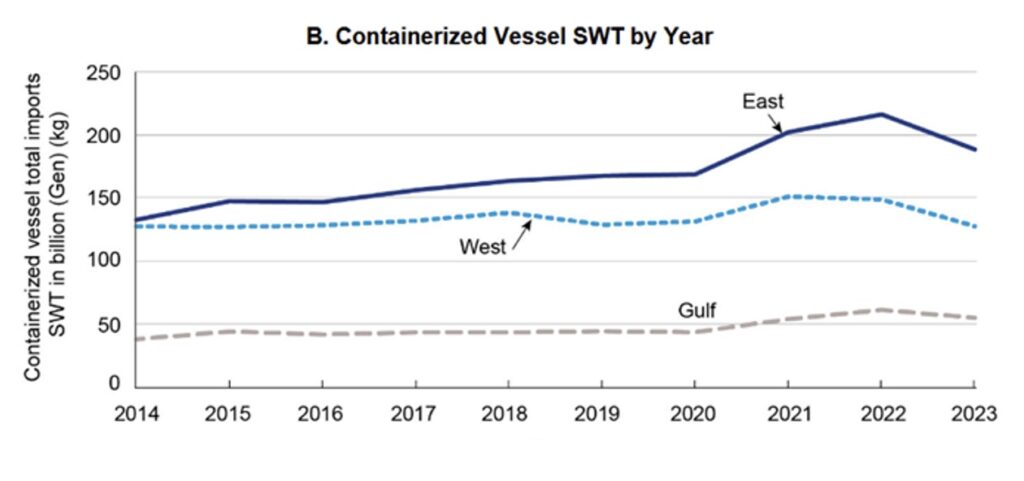
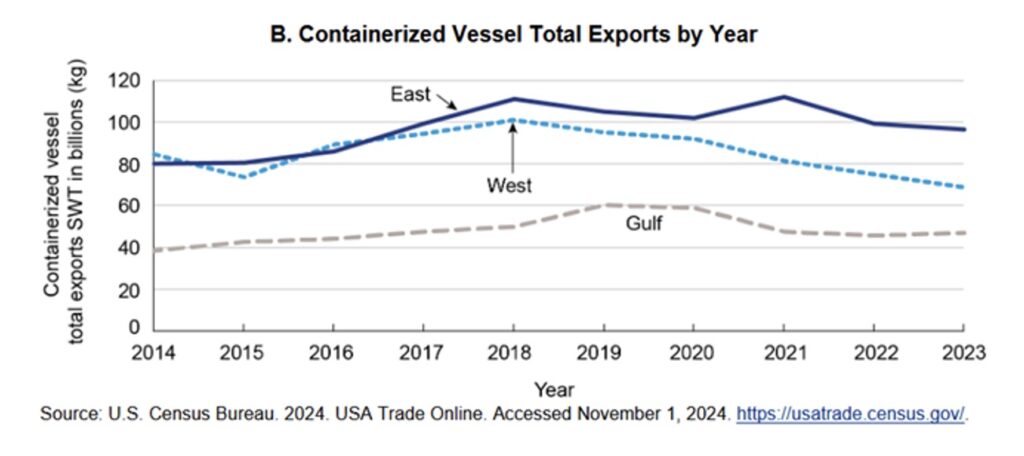
PCIP Project Development Team
Melissa Cribbins: Executive Director of the PCIP project – mcribbins@portofcoosbay.com
Keith Levitt: former Port of Portland employee performs consulting services for the PCIP project through his company Confluence Strategies – https://www.confluencestrategies.net/
Matt Friesen – External Affairs for the Port of Coos Bay – mfriesen@portofcoosbay.com